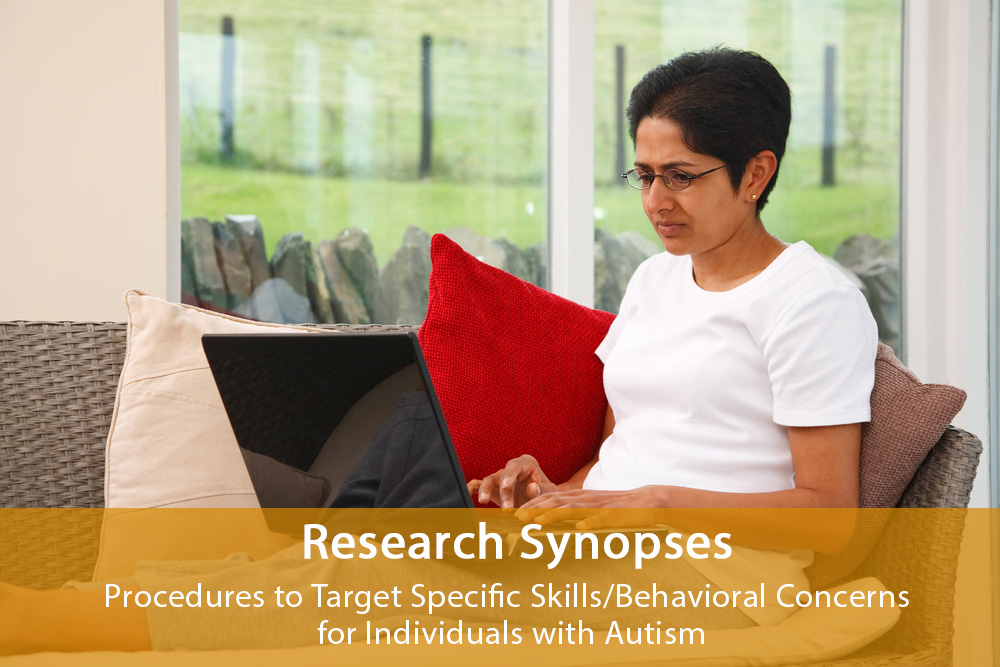Flippin, M., Reszka, S., & Watson, L. R. (2010). Effectiveness of the picture exchange communication system (PECS) on communication and speech for children with autism spectrum disorders: A meta-analysis. American Journal of Speech-Language Pathology, 19, 178-195.
Reviewed by: Kathleen Moran
Caldwell College
Why research this topic?
 The Picture Exchange Communication System (PECS), based on the principles of applied behavior analysis, is a popular approach for teaching children with autism to communicate by selecting pictures and handing them to a communication partner. Due to the lack of systematic reviews of the effectiveness of the standard PECS protocol on communication and speech outcomes for children with autism, the purpose of this review was to conduct a meta-analysis (a method for statistically combining results across studies) to integrate research findings in the current PECS literature.
The Picture Exchange Communication System (PECS), based on the principles of applied behavior analysis, is a popular approach for teaching children with autism to communicate by selecting pictures and handing them to a communication partner. Due to the lack of systematic reviews of the effectiveness of the standard PECS protocol on communication and speech outcomes for children with autism, the purpose of this review was to conduct a meta-analysis (a method for statistically combining results across studies) to integrate research findings in the current PECS literature.
What did the researchers do?
The researchers reviewed and included eleven studies published in English peer-reviewed journals. The included articles were published between 1994 and 2009 from four different databases. The researchers used different combinations of four words during their search (PECS, Autism, Picture Exchange Communication System, and Bondy and Frost). The researchers included only articles that had at least one child participant with autism.
What did the researchers find?
The researchers concluded that PECS is effective in helping children with autism use pictures to communicate; however, evidence that PECS helps children acquire vocal speech is not as strong, perhaps because the quality and quantity of research on speech outcomes has been insufficient to produce a clear pattern of results. The researchers also established three child characteristics that may be pretreatment identifiers of children with autism likely to respond to PECS: limited motor imitation, strong object exploration, and limited joint attention.
What were the strengths and limitations of the study? What do the results mean?
Although PECS is well-researched compared to other communication interventions, this review should be viewed with caution because there is still only a small number of controlled empirical studies evaluating PECS, especially for speech outcomes. Also, if PECS does lead to vocal speech, it is unclear from the available research which of its components is responsible for this development. Another limitation of the studies is that they did not measure how accurately PECS was implemented. A further concern is that the studies did not show clear evidence that children’s speech and picture communication are maintained and generalized from training to novel settings when using PECS.
Strengths of the review included careful procedures for identifying studies and abstracting information from them. For example, the researchers included tables summarizing the specifics of each study, outcome measures, identification of excluded studies and reasons for exclusion, and citations for all studies (excluded and included) referenced. In addition, they conducted reverse searches and cross-referenced results with articles listed on the PECS official research page. The researchers also included a brief overview of PECS in the beginning of the study.
Further research should include assessment of speech development outcomes based on PECS intervention, increased documentation of procedural integrity across studies, evaluations of generalization and maintenance of PECS, comparisons of PECS to alternative treatments, and examinations of potential influence of pre-intervention characteristics.
Citation for this article:
Moran, K. (2012). Research review: The effectiveness of the picture exchange communication system (PECS) on communication and speech for children with autism spectrum disorders: A meta-analysis. Science in Autism Treatment, 9(2), 23.
#Communication #School #SchoolAge #SLPs #Teachers

